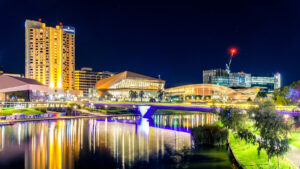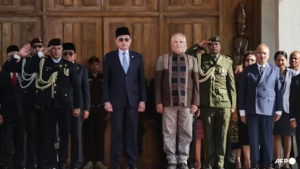Bolivia, one of South America’s most resource-rich yet economically fragile nations, is facing the real threat of a sovereign debt default, its first since 1984. The warning comes directly from President Luis Arce, who on June 20 publicly acknowledged that unless fresh external funding is secured, the government may no longer be able to service its debt.
“We are trying not to default,” Arce told AFP, “but how do we pay if we don’t have the resources?”
As of mid-2025, Bolivia’s external debt has reached US$13.3 billion (approximately Rp218 trillion), with major creditors including the Inter-American Development Bank, the World Bank, CAF (the Development Bank of Latin America and the Caribbean), and China. The debt now accounts for over 37% of Bolivia’s gross national income, a level deemed risky by global financial institutions.
The immediate fiscal crisis stems from parliament’s refusal to approve a US$1.8 billion loan proposal by Arce’s administration, effectively blocking access to multilateral aid. Bolivia needs an estimated US$2.6 billion by December 2025 for fuel imports and debt repayments.
A worsening foreign currency shortage, partly due to declining gas exports and weak investor confidence, has severely constrained Bolivia’s ability to finance imports, particularly fuel—heavily subsidized for domestic consumption. The state-owned oil company YPFB has admitted to depleted gas reserves as a result of underinvestment in exploration since 2023.
Arce characterized the situation as a systemic failure: “When a country borrows, you pay back principal and interest, which should be offset by inflows from new financing. But we are now trapped in a cycle where no new loans are coming in.”
The economic distress is compounded by surging inflation, which reached 18.4% year-on-year in May 2025, the highest in nearly two decades. The Boliviano currency continues to depreciate, undermining consumer purchasing power and triggering nationwide shortages of essential goods.
Bolivia, home to around 12 million people, is also experiencing deepening political instability. The rift between Arce and former ally-turned-rival Evo Morales has fueled mass protests and violent clashes, with at least five deaths reported in the past week. Morales, who ruled Bolivia for over a decade, has openly called for Arce’s resignation while mobilizing his political base.
Despite pressure, Arce has ruled out early resignation but confirmed he will not seek re-election in the upcoming August vote. His approval rating has plunged to just 9%, according to Latinobarometro—making him one of the least popular presidents in the region.
With a heavy dependence on gas and lithium exports, Bolivia’s economic model now faces structural risks. The nation’s rich resource base has proven insufficient to shield it from macroeconomic imbalances, fiscal mismanagement, and political volatility.
Analysts warn that if Bolivia defaults, it may trigger a broader loss of investor confidence in frontier markets across Latin America. A downgrade in sovereign ratings, higher borrowing costs, and restricted access to multilateral funding could follow—deepening the crisis further.
As Bolivia stands at a financial crossroads, the next few months will determine whether the country can engineer a turnaround or spiral into a prolonged period of economic and social unrest.









